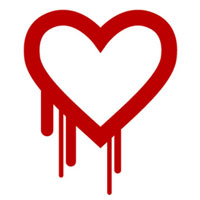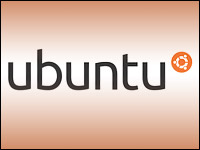
Jennifer Goodwin is on a mission — and a budget that doesn’t go beyond five digits. Goodwin is gearing up to expand her company,InternetGirlFriday.com, which provides virtual business administrative support.
“I have been turning away business for a couple of years now, in some part due to the lack of IT support systems that I need,” Goodwin told LinuxInsider.
She is now looking at various options, including open source to build the necessary CRM and related applications that she will need to grow — and eventually franchise — InternetGirlFriday.com.
It’s been a data-intensive process. “There are a lot of options out there that can cover everything that I want my system to do,” noted Goodwin.
For a small business, it can be overwhelming. However, it can also be worthwhile in the long run, she said, given the savings.
Indeed, that has historically been one of the drivers behind the adoption of open source in any enterprise, whether small, medium-sized or large: the cost savings of not having to pay for licensing.
The savings have been proven without a doubt on the server side,SteelEye Chief Technology Officer James Bottomley told LinuxInsider.
“There is no dispute there,” he remarked.
Bottomley, an active member of the open source community, maintains the SCSI subsystem, the MCA subsystem, the Linux Voyager port and the 53c700 driver.
Now, he said, the question is whether Desktop Linux can cost-effectively replace Windows — especially after the Vista rollout.
“Interest is there as well,” Bottomley said, “but the jury is still out as to whether the savings will, in fact, materialize. So far, they haven’t been significant enough to be disruptive.”
Underpenetrated Segment?
Even though the debate over savings is not entirely settled, there are signs that small businesses are not embracing the clear advantages that open source does offer.
For instance, spending is usually more constrained in SMBs, and some firms make the mistake of discounting open source as an option because they believe there will be costly tinkering, Javier Soltero, CEO ofHyperic, an open source systems management company, told LinuxInsider.
Also, SMBs tend to gravitate toward Microsoft, at least on the desktop.
“Microsoft has been very successful at penetrating this space,” Soltero noted.
Many SMBs understand the value of open source — low cost, security, flexibility — but are put off by the complexity, agreed Red Hat Exchange (RHX) Product Director Matt Mattox.
“One of the frustrations shared by many SMBs is the lack of affordable customization capabilities for business software,” he told LinuxInsider, “[but] this is where open source solutions can make the most headway. Because open source software is inherently modular and flexible, the longer-term opportunity is to engage the open source community to develop customized solutions for a wide variety of SMB niches.”
Growing Options
This state of affairs is changing as providers of open source spend more time targeting SMBs and — as InternetGirlFriday.com’s Goodwin illustrates — SMBs begin to investigate the growing number of options available to them on the market.
Linux is spawning a huge amount of growth in Silicon Valley, according to Bottomley.
“Look at Google, for instance,” he said. “Its use of Linux is internal — most of their commercial products are built on Microsoft. But they have built their own data centers on top of Linux. There are a lot more Googles out there than you would realize on a smaller scale.”
Red Hat is providing a selected set of open source business applications that are preintegrated on Red Hat and JBoss infrastructure, and delivered via the Red Hat Network, RHX’s Mattox noted.
“RHX will also offer customers a single point of contact for supporting the entire stack — from the operating system to the application,” he said.
Speaking in broader terms, Todd Williams, vice president, technology ofGenuitec, the maker of the MyEclipse IDE (integrated development environment), noted that the entire software stack for an SMB’s Internet presence is commercially available.
“The LAMP (Linux/Apache/MySQL/PHP) stack contains the basics for launching Web sites and serving users,” said Williams. A business can “layer on top a free content management system, which are legion.”
The Downside
Open source is hardly a panacea for all IT issues, though, especially for SMBs. Budgets do matter — although perhaps not as much with open source. Total cost of ownership is far from free, Williams noted, due to the amount of time and expertise required to install, configure, manage and secure the system.
While it is likely there are companies using open source to create tools for internal use, he added, how often this occurs is questionable. In general, it is quite difficult and expensive to build high-quality tools, whether they’re open source or commercial.
“To illustrate the point, you could look at the number of Eclipse products listed atEPIC — currently about 850 — and compare that with user ratings that reflect both the breadth of their use and assessments of their quality. In this case, there are only a handful of products with quality rankings over 9.0,” said Williams.
His point?
“While it might be relatively easy to try to extend Eclipse, it can be much more difficult to make those extensions valuable and high-quality,” he reflected.
In this case, though, it is not just SMBs that are missing the open source boat.





















































